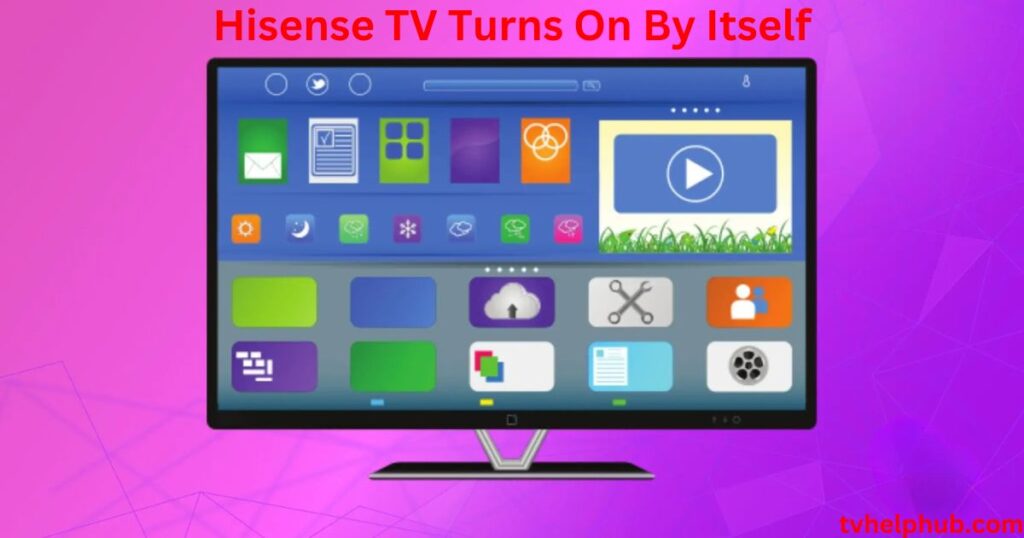Introduction
It’s frustrating when your Hisense TV starts turning on by itself. This issue can seem random, but there are common reasons behind it. Sometimes, it’s just a setting that needs to be adjusted in the TV’s menus. One thing you can try is power cycling your TV, which helps reset any potential glitches. Another possible cause is the Wi-Fi connection or screenless mode, which could be causing your TV to turn on unexpectedly. If this is the case, deactivating Wi-Fi or disabling certain power settings might do the trick.
Common ProbHlems You May Encounter With Your Hisense TV
If you’re a Hisense TV owner, you might have run into some issues that can leave you scratching your head. A common problem people face is their TV turning on by itself. Some of these problems may include power problems, display issues, or even sound malfunctions. Understanding what’s going wrong is key to maintaining a smooth viewing experience.
Quick Fixes For Common Hisense TV Problems
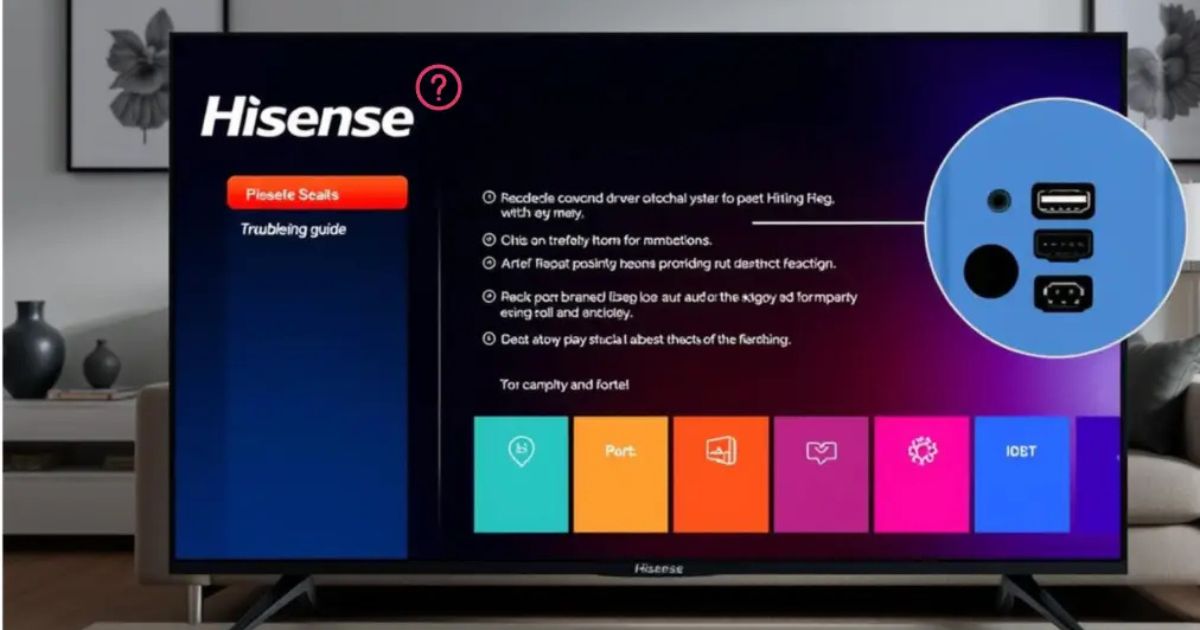 There are several ways to approach the problem, and it helps to know how to quickly fix issues related to your Hisense TV. Sometimes it can be simple things like checking the power cord, ensuring the power supply is working properly, or even inspecting the remote. Software bugs can also cause the TV to behave oddly, so don’t forget to check for updates. If you’re facing screen issues like blurry visuals or a black screen, it could be an issue with your HDMI cables or the TV’s internal hardware.
There are several ways to approach the problem, and it helps to know how to quickly fix issues related to your Hisense TV. Sometimes it can be simple things like checking the power cord, ensuring the power supply is working properly, or even inspecting the remote. Software bugs can also cause the TV to behave oddly, so don’t forget to check for updates. If you’re facing screen issues like blurry visuals or a black screen, it could be an issue with your HDMI cables or the TV’s internal hardware.
Step-by-Step Process to Fix Your Hisense TV
Here’s a simple method that can help you resolve the power problems with your Hisense TV. First, ensure your TV is completely unplugged. This step is essential for letting the TV discharge and reset any software glitches. Press and hold the power button for 10 seconds. After that, plug it back in and check if the TV powers on properly. If your TV still doesn’t turn on, try performing a soft reset by unplugging it again for a few minutes.
Make sure that the TV is connected to a reliable power source and not an overburdened surge protector. Additionally, check for any internal hardware failures that could be preventing the TV from functioning normally.
Using the Right Power Source for Your Hisense TV
If you’re using a surge protector, try unplugging your Hisense TV from it and plugging it directly into a wall outlet. Sometimes, mismatch in power needs between your TV and the protector can cause interruptions in the power flow. If the problem persists, move your TV or the router closer to boost signal strength and ensure there are no internet stability issues that could be affecting the TV’s performance.
If your TV was already plugged directly into a wall outlet, consider trying a different one, preferably one that isn’t connected to a switch. A different outlet may help you rule out power fluctuations, which could be contributing to your TV turning on or off by itself.
Check Your TV’s Remote for Issues
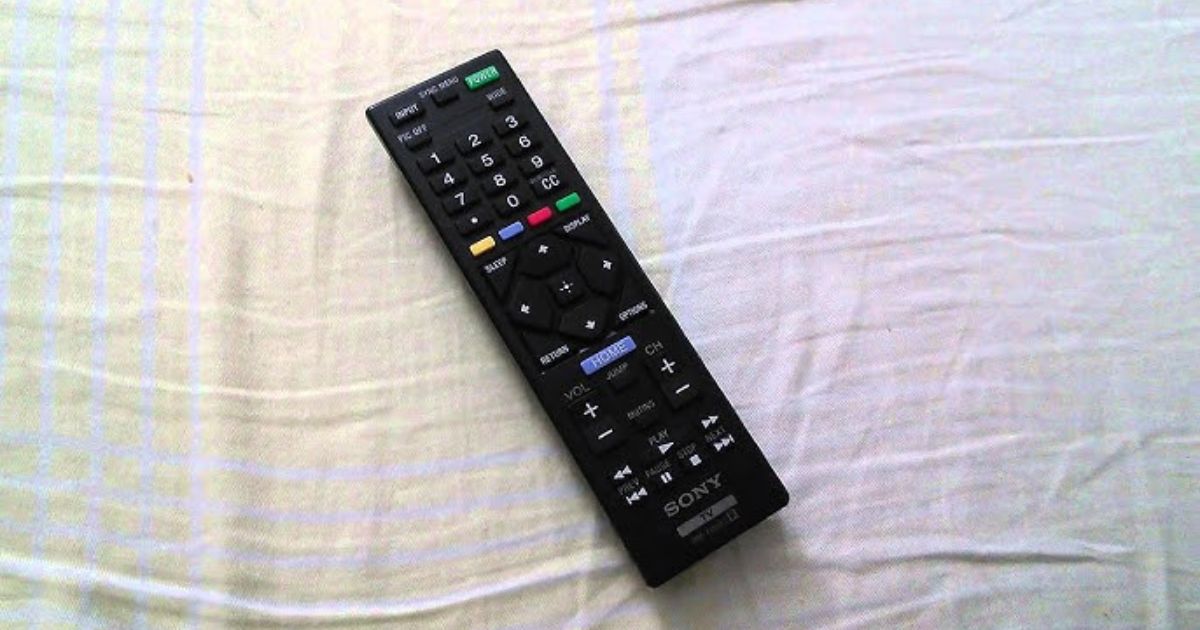 The remote could also be causing problems with your Hisense TV. If your TV is switching on unexpectedly, it might be due to a malfunctioning remote. Start by checking the batteries and ensure there’s no signal interference from other devices. Make sure that the infrared sensor on the TV isn’t blocked, as this can lead to unintentional inputs being sent to the TV.
The remote could also be causing problems with your Hisense TV. If your TV is switching on unexpectedly, it might be due to a malfunctioning remote. Start by checking the batteries and ensure there’s no signal interference from other devices. Make sure that the infrared sensor on the TV isn’t blocked, as this can lead to unintentional inputs being sent to the TV.
In some cases, a misalignment between the remote and the TV’s sensor can result in unexpected power-ups. If everything seems in order, but the issue continues, you can try resetting the remote, re-pairing it with the TV, or even using a universal remote or the Hisense TV remote app.
Software and Hardware Solutions for Persistent Issues
If your Hisense TV continues to turn on by itself despite following all the steps above, there may be deeper software bugs or hardware issues at play. In this case, a soft reset or firmware update might be necessary to eliminate the problem. For issues related to the TV’s internal hardware, it may be time to contact a repair professional.
Network or WiFi settings could also play a role in strange TV behavior, so be sure to verify that the settings are correct and that the network connection is stable. If you experience app loading problems or streaming issues, clearing the app’s cache or resetting the network might resolve the issue.
Possible Cause: HDMI-CEC Misbehaving
When your Hisense TV keeps turning on by itself, one of the first things you should check is HDMI-CEC (Consumer Electronics Control). This feature lets devices control each other over HDMI. If you have a gaming console, like PlayStation, connected, CEC could be automatically turning your TV on, even without you touching the remote. It’s designed to switch inputs or power on your TV when you turn on connected devices, but when it malfunctions, it can cause your TV to turn on unexpectedly.
The problem is often subtle and not immediately obvious, but when CEC misinterprets signals, your TV could start turning on and off on its own. You can try to solve this by going into the TV settings and disabling CEC. Depending on your TV’s manufacturer, this might be labeled differently, like Bravia Sync for Sony, Anynet+ for Samsung, or SimpLink for LG. You’ll need to locate this feature in the settings menu and disable it to see if it solves the problem.
Troubleshooting Display Problems and Picture Issues
Another issue that might cause your Hisense TV to behave unpredictably is display problems like black screens, distorted visuals, blurry images, or incorrect colors. These problems can often be traced back to faulty HDMI cables, software bugs, or even internal hardware failures. If the display is acting up, try replacing the HDMI cables first, as a loose connection can easily cause these issues.
Adjust Settings for Optimal Picture Quality
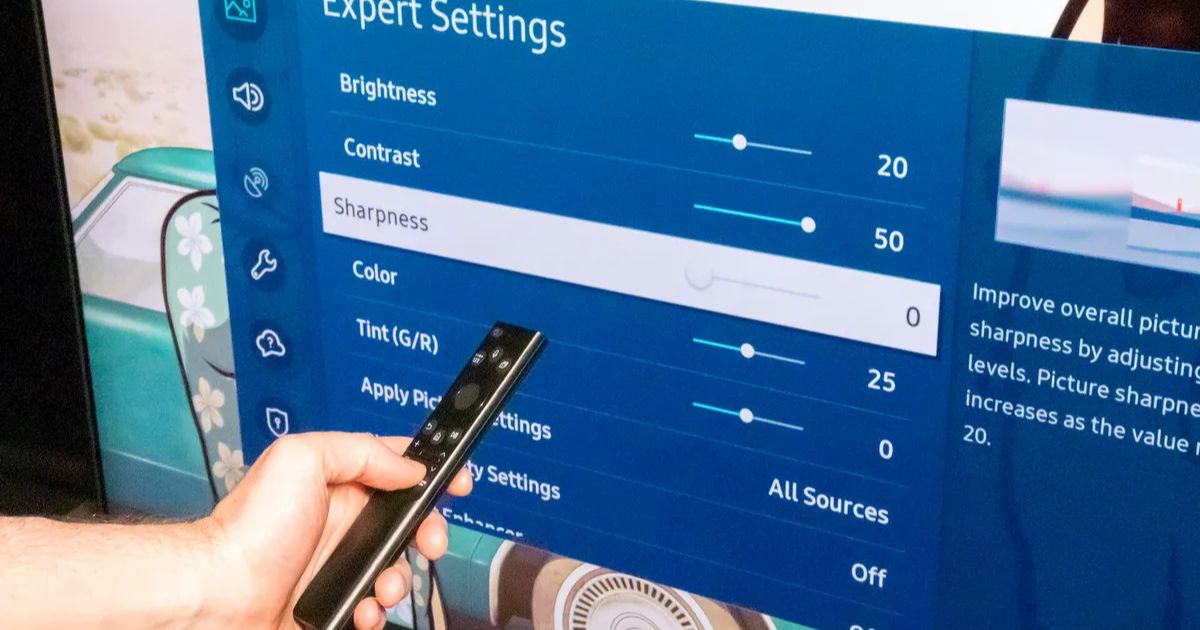 If you’re dealing with picture problems such as blurry or distorted visuals, adjusting your TV’s settings can help. This includes fine-tuning contrast, brightness, and color accuracy to restore optimal picture quality. If you’re struggling with your Hisense TV unexpectedly turning on, you’re not alone. Many users face this issue where the TV powers up on its own, even when it is off. One common reason for this could be interference from smart home devices like Google Home, SmartThings, Alexa, or Logitech Harmony. These devices may be sending automatic commands, causing the TV to power on or off unintentionally.
If you’re dealing with picture problems such as blurry or distorted visuals, adjusting your TV’s settings can help. This includes fine-tuning contrast, brightness, and color accuracy to restore optimal picture quality. If you’re struggling with your Hisense TV unexpectedly turning on, you’re not alone. Many users face this issue where the TV powers up on its own, even when it is off. One common reason for this could be interference from smart home devices like Google Home, SmartThings, Alexa, or Logitech Harmony. These devices may be sending automatic commands, causing the TV to power on or off unintentionally.
Identify the Problem and Fix Your TV
To address this, the first thing I recommend is checking your Wi-Fi settings. If your TV is connected to the internet, it might be responding to automatic signals or commands that you aren’t aware of. Start by disconnecting your Smart TV from the Wi-Fi network and see if this stops the issue. For an extra layer of protection, you can go into your TV’s wireless settings and either forget your home network or completely deactivate Wi-Fi. This should prevent any accidental power-ups caused by network interference.
Check for Automation or Scheduling Issues
Sometimes, the issue can be traced back to an automation setting in your smart home devices. Many of these gadgets are designed to interact with your Hisense TV, turning it on or off based on certain routines. If you use apps like Google Cast, Apple AirPlay, or any other smart home control apps, it’s possible that these are unintentionally triggering your TV. Take a moment to go through your apps and check whether any of them are linked to your TV’s power settings. If you notice anything unusual, adjust the settings or disable the feature to avoid further interference.
Adjust TV’s Backlight and Resolution Settings
Another potential culprit could be the TV’s settings themselves. Backlight settings control how bright your screen gets, and brightness can sometimes cause the TV to appear as if it’s turning on by itself. If you have the backlight set too high, it might be triggering a false on-screen signal. The best approach here is to find a balance. Also, check your resolution settings.
Audio and Volume Settings Check
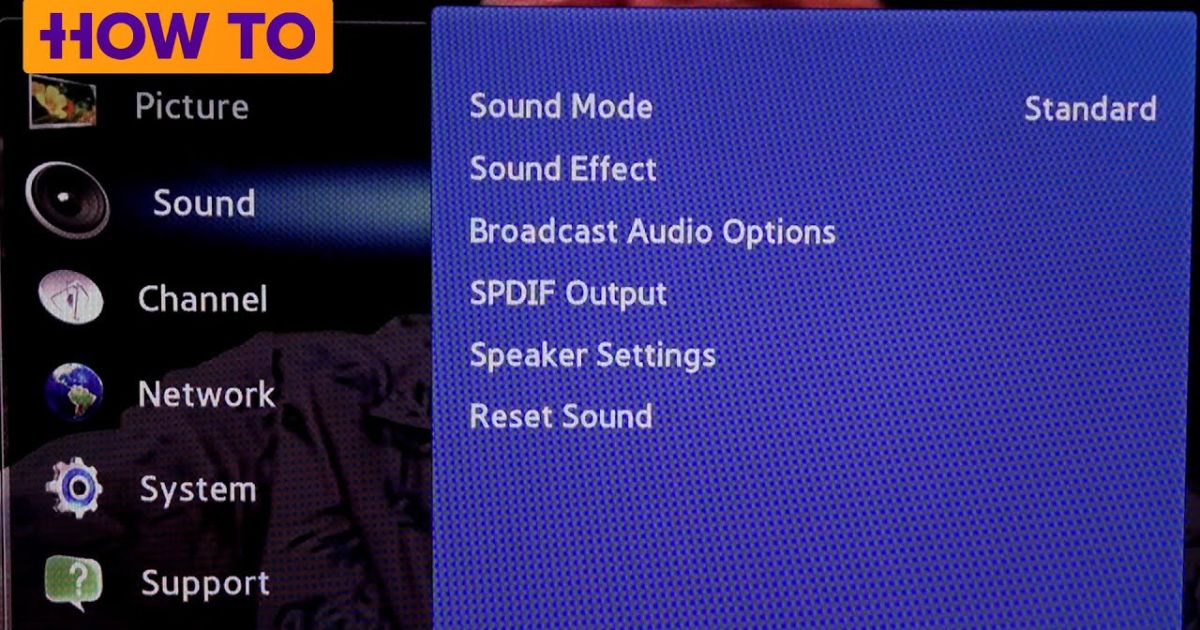 Audio issues, including unexpected sound or buzzing, can sometimes be connected to your TV turning on unexpectedly. Always check that the volume is not muted or turned too low. Occasionally, your TV’s sound settings might also be causing problems, especially when interacting with connected devices. Ensure that your external devices or Bluetooth settings are not set to trigger audio or video, causing the TV to turn on automatically.
Audio issues, including unexpected sound or buzzing, can sometimes be connected to your TV turning on unexpectedly. Always check that the volume is not muted or turned too low. Occasionally, your TV’s sound settings might also be causing problems, especially when interacting with connected devices. Ensure that your external devices or Bluetooth settings are not set to trigger audio or video, causing the TV to turn on automatically.
Check Your TV’s Power Timer
Finally, many newer Hisense TVs have a built-in power timer feature that allows you to schedule when the TV turns on or off. This might be set accidentally, especially if a child or pet has interacted with your remote. Check your TV’s timer settings and ensure they are set properly. If you find the power timer has been activated, disabling it will prevent the TV from turning on at unwanted times.
Hisense TV Error Codes and Network Connectivity Issues
If your Hisense TV keeps turning on by itself, it could indicate a few possible causes, such as an error code or a hardware problem. These issues often signal that the device might need product quality service. If this problem continues, don’t worry, the solution might be simpler than you think. Start by checking for any error codes displayed on the screen or in the TV’s settings.
Moreover, sometimes the issue could be linked to network instability or an incorrect setting. For example, network connectivity issues can disrupt TV functions and even cause strange behavior like the TV turning on unexpectedly. If you experience difficulty connecting your Hisense TV to Wi-Fi, this could be a major factor. A quick fix involves verifying your router’s setup and ensuring your internet connection is stable.
Addressing Remote Problems and Other Simple Fixes
Another common reason for your TV turning on by itself is an issue with the remote. If the batteries in your remote are running low, they could send out errant signals causing the TV to turn on randomly. Replacing the batteries with a fresh pair may immediately solve this problem. While you’re at it, take a moment to check the buttons on the remote, especially the power button. If it’s sticky from previous spills, like soda, it might cause the button to stick down and continuously turn the TV on and off. Cleaning the remote thoroughly can often fix this small but annoying problem.
The Power Scheduling Feature
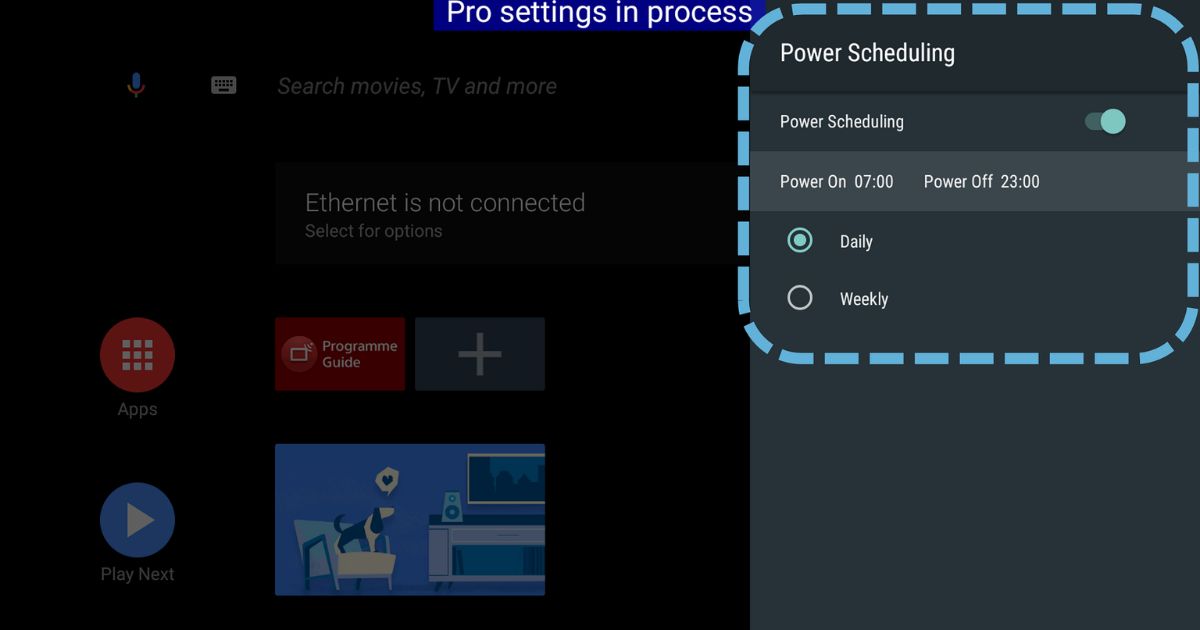 If you’ve checked the remote and network settings and the problem persists, then the next thing to investigate is the power-scheduling feature on your TV. Hisense TVs come with a timer function that can automatically turn the TV on or off at specific times. To fix this, navigate through the settings menu on your TV.
If you’ve checked the remote and network settings and the problem persists, then the next thing to investigate is the power-scheduling feature on your TV. Hisense TVs come with a timer function that can automatically turn the TV on or off at specific times. To fix this, navigate through the settings menu on your TV.
Q1: Why is my Hisense TV turning on by itself?
There are several possible causes for this issue. First, your TV’s software might have bugs or glitches, or it could be related to your network settings or app problems. If apps are not loading properly, it’s a good idea to clear the app’s cache or update them. Additionally, check if external factors like a universal remote or infrared sensor interference could be causing the problem.
Q2: Can a factory reset fix my Hisense TV turning on by itself?
Yes, a factory reset can be an effective solution to fix the issue, especially if it’s related to bugs or glitches in your TV’s software. However, remember that performing a hard reset will erase all data, including downloaded apps and login credentials. Be sure to back up any important information before resetting the TV.
Q3: What if a neighbor’s remote is causing the issue?
It’s possible that a neighbor’s universal remote is sending compatible codes to your Hisense TV, causing it to turn on by itself. While rare, this can happen, so be sure to check for any potential signal interference. Adjusting the positioning of the infrared sensor or moving the TV away from direct sunlight can also help prevent this.
Q4: How can I prevent my Hisense TV from turning on automatically?
If your TV is turning on due to the low-powered sleep state or settings related to features like Eco Mode, you can adjust these settings in the TV’s menu. Disabling automatic wake features may help stop the TV from turning on unexpectedly. Also, restarting the TV or the app you’re using can sometimes resolve this issue.
